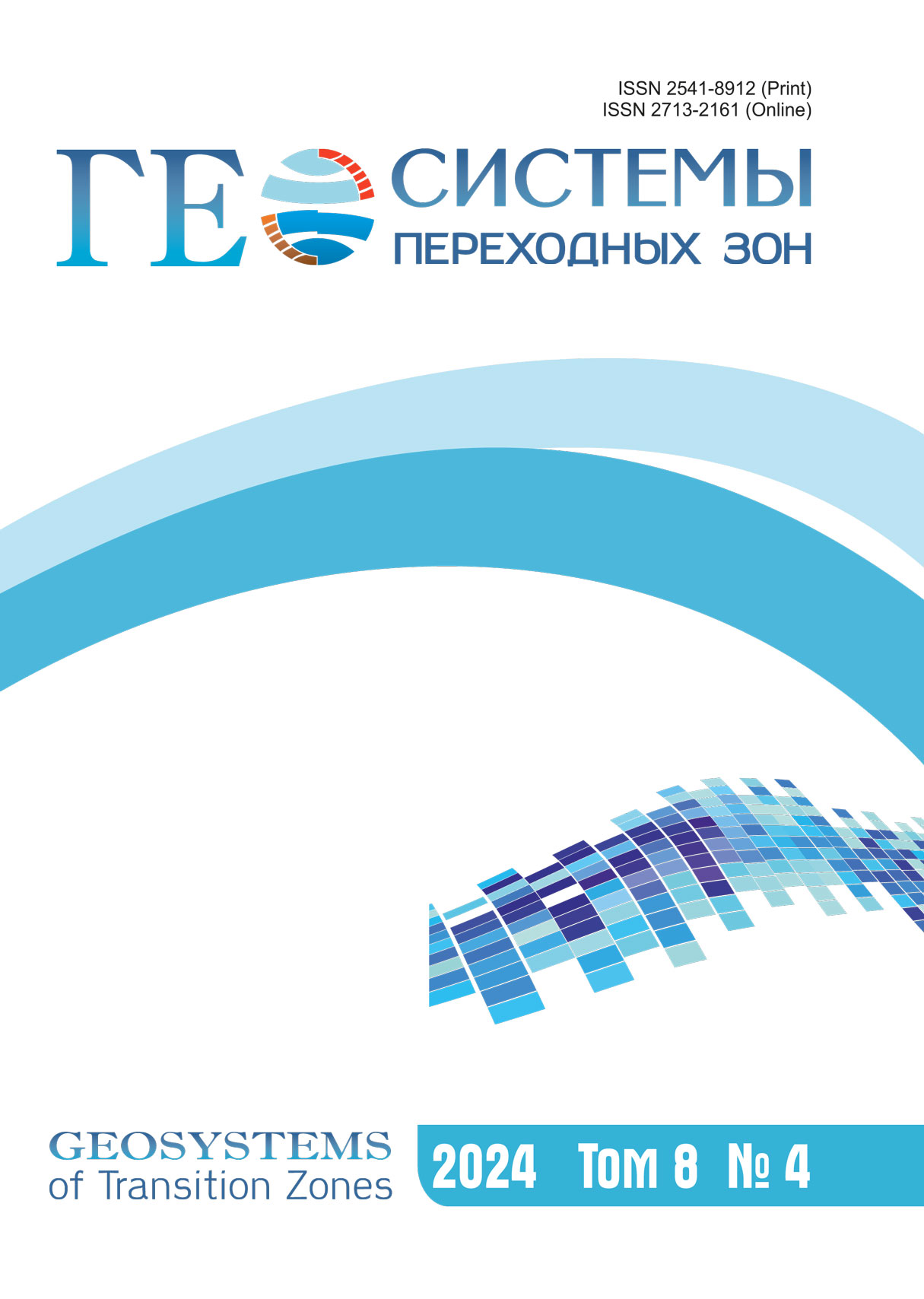
| Abstract PDF ENG. .PDF RUS | Full text PDF ENG. .PDF RUS |
Abstract. The aim of the study was to confirm the possibility of forecasting tsunamis of non-seismic (volcanic) origin using the express method of operational forecasting. The surface wave formed as a result of the explosive volcanic eruption on January 15, 2022 was a superposition of forced (baric) waves caused by an atmospheric pressure wave and free (gravity) waves generated by the disintergration of the disturbance in the source. The express method of operational tsunami forecasting was used to compute the gravitational component of the surface wave. The method allows one to compute the tsunami waveform at any point in the ocean and near the coast in real time based on the data from the sea level measurement stations. The computation of the tsunami on 15.01.2022, its gravitational component, at the DART stations remote from the source was performed based on the data from the DART stations 51425 and 52406 closest to the volcano. For an adequate forecast, the information on the tsunami of the DART stations closest to the source with the duration of a quarter of the first period is sufficient, which is especially important in the operational mode. The result satisfies the definition of the concept of "tsunami forecast" formulated by the Intergovernmental Oceanographic Commission of UNESCO. It has been confirmed that the express method can provide a tsunami forecast regardless of the mechanism of its excitation. It remains unclear how adequate the assessment of the amplitude of surface waves is based on the bottom pressure data is.
Keywords:
tsunami, operational tsunami forecast, tsunami warning services, Pacific Ocean, sea level measurements, Lamb waves, forced waves, free waves
For citation: Korolev Yu.P., Korolev P.Yu. Assessment of the tsunami in the Pacific Ocean caused by the explosion of the Hunga Tonga–Hunga Ha'apai volcano on January 15, 2022, using the express method of operational forecasting. Geosistemy perehodnykh zon = Geosystems of Transition Zones, 2025, vol. 9, No. 1, pp. 56–65. (In Russ. & in Engl.).
https://doi.org/10.30730/gtrz.2025.9.1.056-065, https://www.elibrary.ru/kktwzl
Для цитирования: Королев Ю.П., Королев П.Ю. Оценка цунами в Тихом океане, вызванного взрывом вулкана Хунга Тонга–Хунга Хаапай 15 января 2022 г., экспресс-методом оперативного прогноза. [Электронный ресурс]. Геосистемы переходных зон, 2025, т. 9, № 1.
http://journal.imgg.ru/web/full/f2025-1-4.pdf, https://doi.org/10.30730/gtrz.2025.9.1.056-065
References
1. Terry J.P., Goff J., Winspear N., Bongolan V.P., Fisher S. 2022. Tonga volcanic eruption and tsunami, January 2022: globally the most significant opportunity to observe an explosive and tsunamigenic submarine eruption since AD 1883 Krakatau. Geoscience Letters, 9, 24. https://doi.org/10.1186/s40562-022-00232-z
2. Nosov M.A., Kolesov S.V., Sementsov K.A. 2023. Interpretation of signals recorded by ocean-bottom pressure gauges during the passage of atmospheric lamb wave on 15 January 2022. Remote Sensing, 15(12), 3071. https://doi.org/10.3390/rs15123071
3. Gusman A.R., Roger J., Noble C., Wang X., Power W., Burbidge D. 2022. The 2022 Hunga Tonga–Hunga Ha’apai volcano air-wave generated tsunami. Pure and Applied Geophysics, 179: 3511–3525. https://doi.org/10.1007/s00024-022-03154-1
4. Purkis S.J., Ward S.N., Fitzpatrick N.M., Garvin J.B., Slayback D., Cronin S.J., Palaseanu-Lovejoy M., Dempsey A. 2023. The 2022 Hunga-Tonga megatsunami: Near-field simulation of a once-in-a-century event. Science Advances, 9(15). https://doi.org/10.1126/sciadv.adf5493
5. Hu G., Li L., Ren Z., Zhang K. 2023. The characteristics of the 2022 Tonga volcanic tsunami in the Pacific Ocean. Natural Hazards and Earth System Sciences, 23: 675–691. https://doi.org/10.5194/nhess-23-675-2023
6. Shrivastava M.N., Sunil A.S., MauryaA.K., Aguilera F., Orrego S., Sunil P.S., Cienfuegos R., Moreno M. 2023. Tracking tsunami propagation and Island’s collapse after the Hunga Tonga Hunga Ha’apai 2022 volcanic eruption from multi-space observations. Scientific Reports, 20109. https://doi.org/10.1038/s41598-023-46397-1
7. Miyashita T., Nishino A., Ho T.-C., Yasuda T., Mori N., Shimura T., Fukui N. 2023. Multi-scale simulation of subsequent tsunami waves in Japan excited by air pressure waves due to the 2022 Tonga volcanic eruption. Pure and Applied Geophysics, 180: 3195–3223. https://doi.org/10.1007/s00024-023-03332-9
8. Fujii Y., Satake K. 2024. Modeling the 2022 Tonga eruption tsunami recorded on ocean bottom pressure and tide gauges around the Pacific. Pure and Applied Geophysics, 181: 1793–1809. https://doi.org/10.1007/s00024-024-03477-1
9. Tanioka Y., Yamanaka Y., Nakagaki T. 2022. Characteristics of the deep sea tsunami excited offshore Japan due to the air wave from the 2022 Tonga eruption. Earth, Planets and Space, 74, 61. https://doi.org/10.1186/s40623-022-01614-5
10. Kubo H., Kubota T., Suzuki W., Aoi S., Sandanbata O., Chikasada N., Ueda H. 2022. Ocean-wave phenomenon around Japan due to the 2022 Tonga eruption observed by the wide and dense ocean-bottom pressure gauge networks. Earth, Planets and Space, 74, 104. https://doi.org/10.1186/s40623-022-01663-w
11. Omira R., Ramalho R.S., Kim J., Gonzalez P.J., Kadri U., Miranda J.M., Carrilho F., Baptista M.A. 2022. Global Tonga tsunami explained by a fast-moving atmospheric source. Nature, 609: 734–740. https://doi.org/10.1038/s41586-022-04926-4
12. Kubota T., Saito T., Nishida K. 2022. Global fast-traveling tsunamis driven by atmospheric Lamb waves on the 2022 Tonga eruption. Science, 377(6601): 91–94. https://doi.org/10.1126/science.abo4364
13. Heidarzadeh M., Gusman A.R., Ishibe T., Sabeti R., Sepic J. 2022. Estimating the eruption-induced water displacement source of the 15 January 2022 Tonga volcanic tsunami from tsunami spectra and numerical modeling. Ocean Engineering, 261, 112165. https://doi.org/10.1016/j.oceaneng.2022.112165
14. Nosov M.A., Sementsov K.A., Kolesov S.V., Pryadun V.V. 2022. Atmospheric lamb wave manifestations in bottom pressure variations. Moscow University Physics Bulletin, 77(6): 896–904. https://doi.org/10.3103/s0027134922060091
15. Korolev Yu.P., Korolev P.Yu. 2020. Short-term forecast of local tsunamis based on data containing seismic noise from deep-ocean stations closest to the sources. Geosistemy perehodnykh zon = Geosystems of Transition Zones, 4(4): 461–473. (In Russ. & in Engl.). https://doi.org/10.30730/gtrz.2020.4.4.447-460.461-473
16. Korolev Yu.P. 2011. An approximate method of short-term tsunami forecast and the hindcasting of some recent events. Natural Hazards and Earth System Sciences, 11(11): 3081–3091. https://doi.org/10.5194/nhess-11-3081-2011
17. Korolev Yu.P., Ivelskaya T.N. 2012. [Enhancement of operational tsunami forecast and tsunami alarms. Analysis of recent tsunamis]. Problemy analiza riska = Issue Risk Analysis, 9(2): 76–91. (In Russ.).
18. Korolev Yu.P. 2024. Express method for operational tsunami forecasting: possibility of its application on the Pacific coast of Russia. Physical Oceanography, 31(5): 736–754.
19. Pararas-Carayanis G. 2011. Tsunamigenic source mechanism and efficiency of the March 11. 2011 Sanriku earthquake in Japan. Science of Tsunami Hazards, 30(2): 126–152. URL: http://www.tsunamisociety.org/STHVol30N2Y2011.pdf